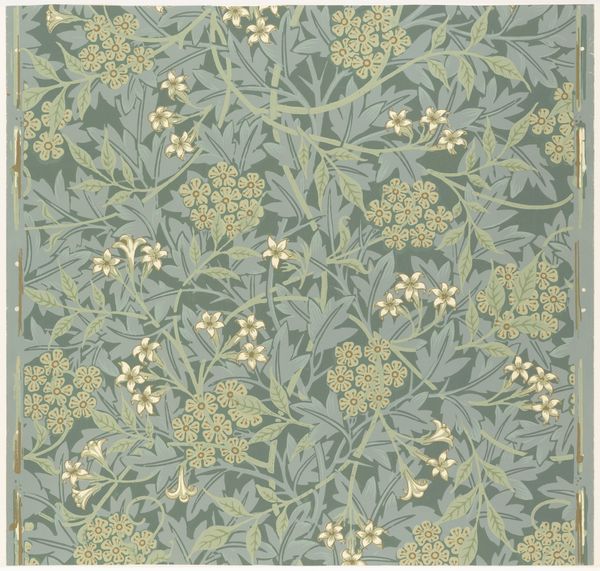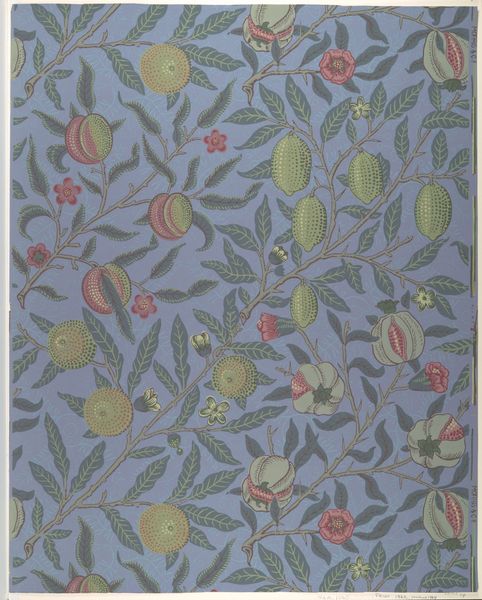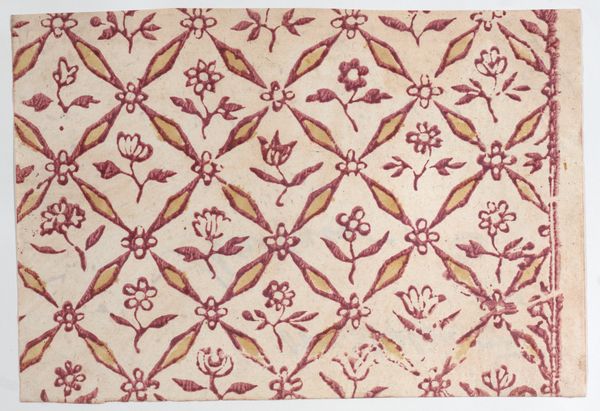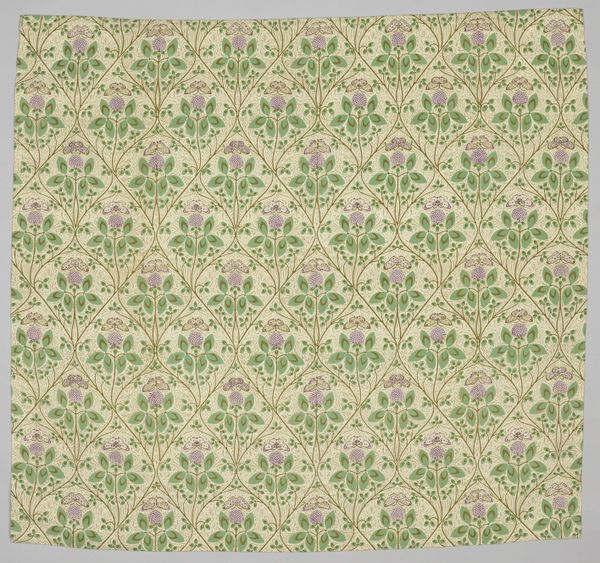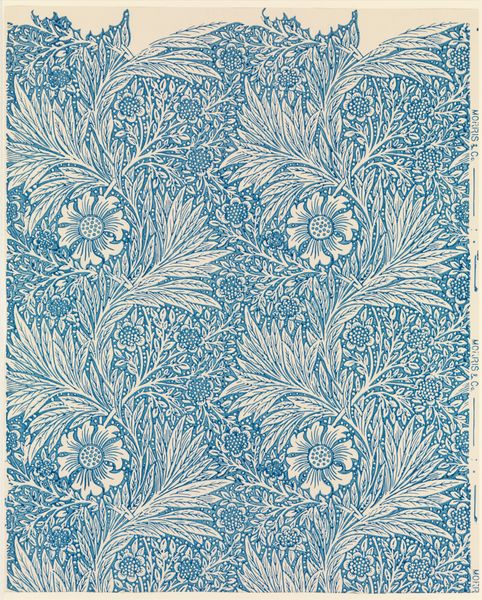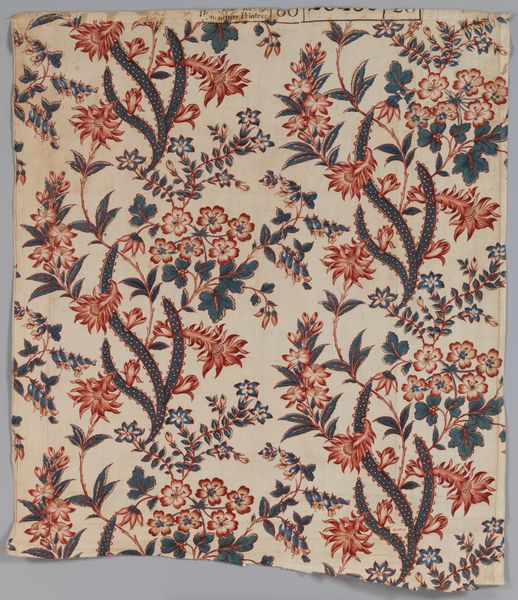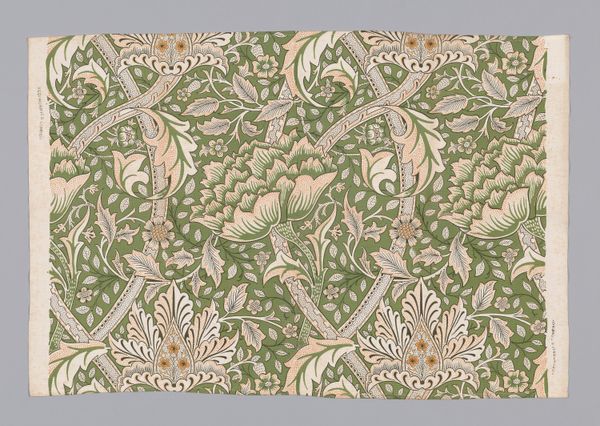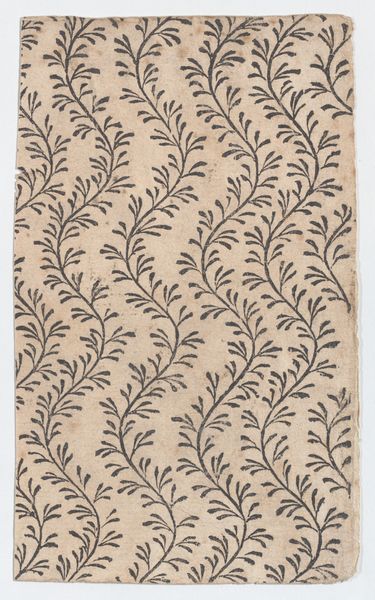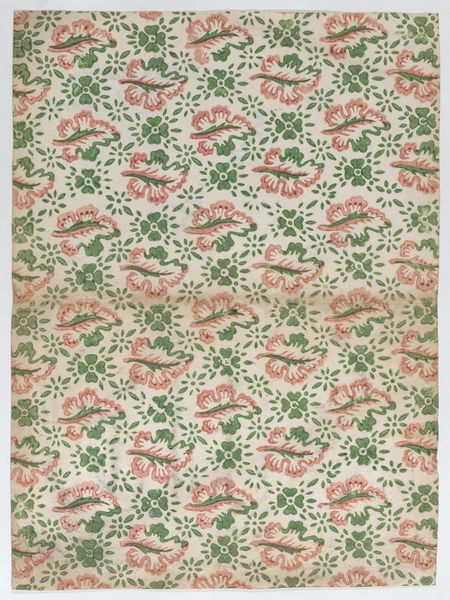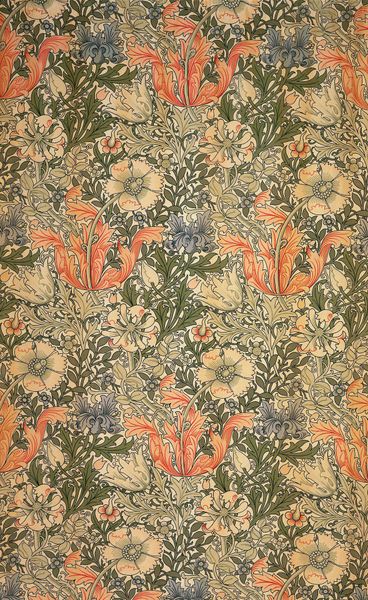
drawing, print, paper
#
drawing
#
organic
# print
#
arts-&-crafts-movement
#
paper
#
pattern design
#
organic pattern
Dimensions: Sheet: 27 x 21 1/2 in. (68.6 x 54.6 cm)
Copyright: Public Domain
Editor: This is William Morris's "Willow Bough," a print and drawing from 1887 currently housed at the Met. It's such an intricate organic pattern. What do you see in this piece, looking beyond its historical context? Curator: Focusing on its formal properties, I observe an all-over pattern demonstrating the masterful use of repetition and rhythm. Note the elegant, curvilinear forms of the willow branches, and how they interlock to create a unified surface. The controlled palette of greens and browns contributes to the restful, harmonious quality. Editor: It feels quite flat to me. Is that deliberate, do you think? Curator: Indeed. The shallow depth of field is an essential formal device. Morris eschews naturalistic perspective in favor of emphasizing the surface plane. Observe how the overlapping branches don't create a strong illusion of depth; instead, they maintain a delicate, flattened appearance. What do you notice about the lines? Editor: They’re all so graceful and fluid! And there's a slight variation in the shades of green used. Curator: Precisely! The subtle variations in hue and value prevent the design from becoming monotonous. They add visual interest while maintaining the overall sense of calm. It demonstrates Morris’s ability to integrate meticulous detail within a coherent decorative scheme. It seems he’s creating visual texture by creating actual texture. Editor: This has provided a lot to think about. Seeing it simply as visual components is incredibly refreshing. Curator: It reframes the piece beyond simple historical context, inviting one to appreciate its aesthetic and conceptual qualities more.
Comments
No comments
Be the first to comment and join the conversation on the ultimate creative platform.
